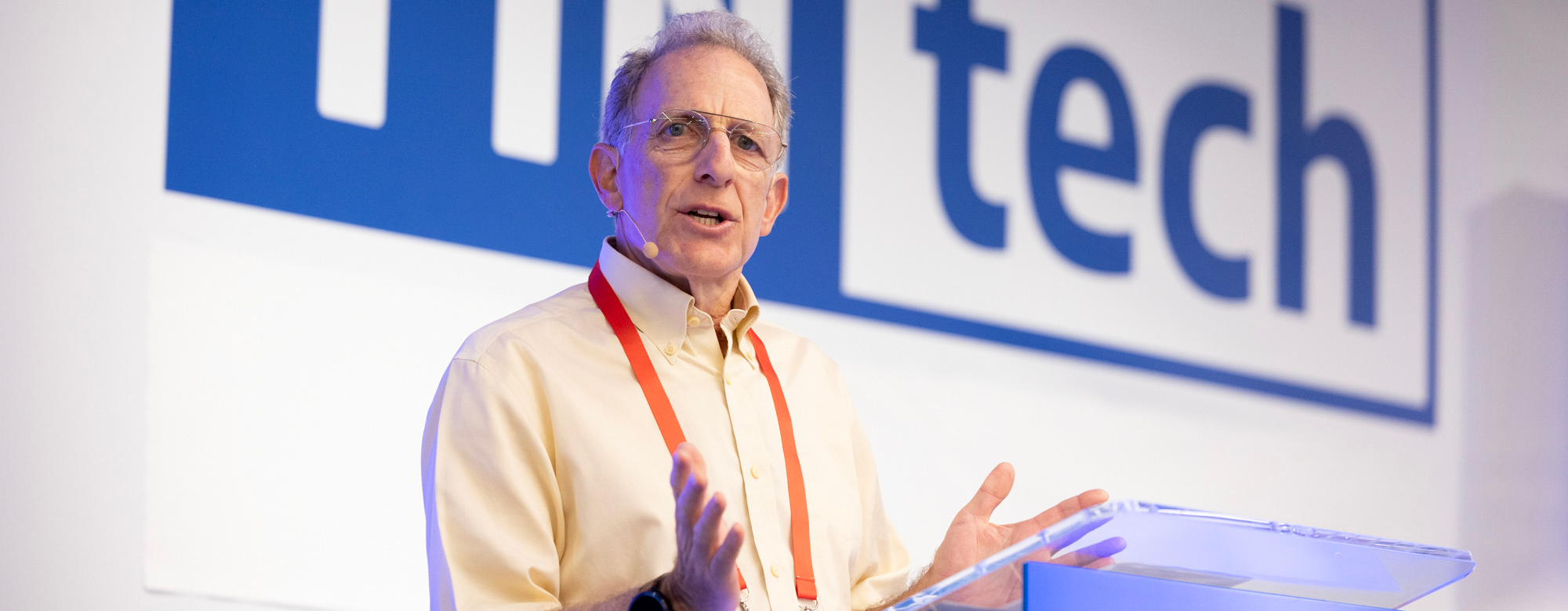Insights on Leadership, Innovation, and Collaboration from TINtech 2024
At TINtech 2024 in June we heard from the Founder and former CEO of Admiral, Henry Engelhardt that the secret to their success was the culture they built over many years of hard work. Henry - but most of all one of fun. He talked about the different tools they used including office games, leaderboards, staff events and thank you cards, but most of all he enforced the need to provide people with some downtime to collaborate with their peers.
But whose responsibility really is it to dictate the culture of a business? We're told it must come from the top down, we are also told it's down to the middle management, and in some cases it's down to the employees. But obviously, if all the employees started playing indoor golf, table tennis and desk chair Olympics without proper executive buy in, it could cause greater issues! So again this leads you to believe that culture must be set, communicated and enforced from the top?
But there’s a problem: the busy schedules of executive teams can pose significant challenges to enforcing a good culture. Executives are often engrossed in strategic decisions, or the next major business drama. If you take the current economic and political climate, then just running the business leaves little time for anything else, let alone participating in office games. Additionally, one of the biggest challenges we see in insurance is different departments having conflicting goals, making it hard to align under a single cultural umbrella. If you consider a traditional insurer, the underwriting teams are focused and renumerated on revenue - while Claims teams are focussed on service. These divergent priorities can create and consolidate silos, undermining a unified culture.

Having a clear differentiation strategy
We heard that culture has to be part of the core strategy, but for this you have to decide which type of business you want to be, and what you want to 'show up as': otherwise it can feel disjointed with everybody running around with a differing purpose. As insurers we need to understand whether we want to be the smartest (delivering exceptional pricing and risk Insight), or the fastest (delivering a speedy response to our brokers and clients). Some are looking to be the most agile (adapting to clients needs at pace) and for others being the most 'client-centric' is the most important aspect i.e. delivering thought leadership and exceptional service to our clients
Most of the time we see culture fail when the leadership teams don’t have a clear and compelling vision, or if it does exist, it has been badly communicated. The worst-case scenario is that there is a vision but it is far too broad, i.e. to be the smartest, fastest, most agile AND most client centric. It’s too much and dumbs down the message: employees are left spinning their wheels and are expected to be culturally ambidextrous.
Setting a core value as a North Star drives everything you do within the organisation, from talent acquisition to customer service all the way to innovation and product development. The strategy guides employees towards common goals and allows the culture to propagate throughout the organisation. A great (non-insurance example) of this clear vision is Patagonia: they show up as having a strong commitment to environmental sustainability, which permeates all aspects of its operations and unites its workforce.
A focus on innovation and problem solving:
Organisations with a great culture perform at their peak when there are problems to solve. And who doesn’t love a bit of creative problem-solving? Companies that foster collaboration and innovation are a magnet for those who thrive in dynamic settings. Take Apple, for example. Their emphasis on cross-functional teamwork means you’re always collaborating with other diverse people, sparking innovation and driving groundbreaking solutions. For future talent, the thrill of being part of such an innovative culture is simply irresistible. In our market we have seen this success in a few of the beta businesses that have emerged, Ki, Rethink and Vave are just a few that have created a differentiation by creating a break away business with a culture where people have the freedom to think differently.

Don’t just focus on the culture of today:
Creating a differentiating culture should not just be focussed on the talent of today, it’s about differentiating yourself and attracting the talent of the future.
A strong, unified culture makes a company attractive to future talent because it offers purpose and meaning, development opportunities, inclusion and belonging. Future talent, particularly millennials and Gen Z, prioritize meaningful work and seek organisations with clear purposes and values - like Patagonia’s commitment to sustainability, or Ben & Jerry’s social activism. A cohesive culture that values employee growth and development will win against the traditional businesses we are used too.
The success stories in our market
As above, we have seen a few of our peers create exceptional cultures - and talented people have gravitated towards these businesses. It’s not just the brand that attracts the talent, I’m talking about the way they behave, the way they think. Their internal teams seem less competitive, and their leadership teams are spending time with their staff making sure that they understand the temperature of the organisation. It seems to create an environment where the cultural burden is shared, it’s not just about a ‘dictatorial’ approach from the leadership team i.e. “thou must have fun !!!’.

Where to start
It’s important to start by gauging the current situation. Some firms are creating cultural audits that help them understand their current cultural strengths and weaknesses. On many occasions this has led to re-defined core values that have been communicated clearly and consistently. Most importantly, the executives have been involved in the cultural initiatives to demonstrate their commitment for building a better business.
Call to action
For executives – Don’t assume you have all of the answers, consider an external perspective to remove legacy thinking, and help you decide how your business should show up. Once the strategy is defined, don’t stop communicating it and make sure your peers and middle management are measured on their contribution to the overall culture.
For middle management – Make sure you take responsibility and re-enforce the strategy, ensure your teams know the value of what they are doing. Free them up to collaborate with their peers by automating or removing legacy processes that don’t add value. Create measurable targets for people, and reward them when they meet them.
As an employee - Be brave and make your voice loud, be curious and volunteer to be involved in new and exciting things. Make sure that those things align to the core strategy of the business and avoid pet projects set by middle management.
Conclusion
Fostering a strong and cohesive company culture is a multifaceted endeavour which requires dedication and clarity from all levels of the organisation. It is evident that while executive leadership plays a crucial role in setting the tone and vision, the responsibility of maintaining and evolving this culture extends to middle management and employees alike. The examples from Admiral and other successful companies highlight the importance of balancing strategic objectives with cultural initiatives, even amidst busy schedules and diverse departmental goals.
A unified culture not only drives employee engagement and satisfaction, but also aligns the entire organisation towards common objectives, whether that be exceptional service, innovation, or customer-centricity. By having a clear vision and shared values, companies can create an environment where everyone feels invested and motivated to contribute, ultimately leading to sustained success and differentiation in our market.
[advert-5]
Sign Up to TINsights
Where we share our latest blogs, industry reports and insights


